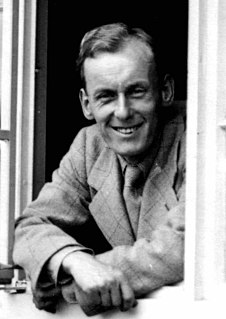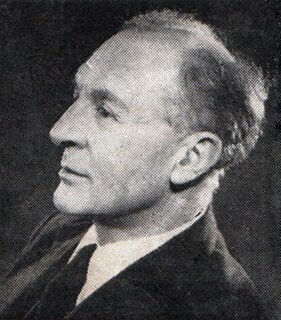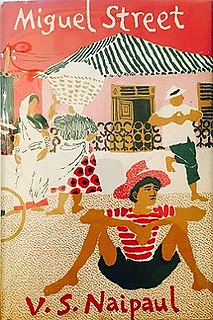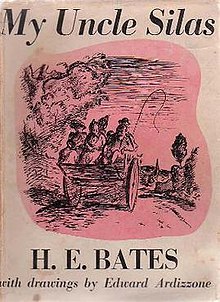Inspiration
Bates's Uncle Silas figure, and many of the lineaments of his character, were based on a real person named Joseph Betts, the husband of H. E. Bates's maternal grandmother's sister Mary Ann. Betts lived in a village in the Ouse Valley, was born in the early 1840s, and lived to the early 1930s. The figure he portrays is Rabelaisian and robust, a true countryman of pithy and roguish character, simultaneously earthy and whimsical, crabbed and wicked, yet full of humour and "strong original devilishness."
Bates considered that, if anything, he had understated the true English rural character. The delightful stories and scenes were drawn from his own fragrant memories of a Northamptonshire childhood, from stories actually told by his great-uncle, or from a more general country lore of apocryphal legends such as any attentive child might be aware of. The boy (representing the author in childhood) enters into most of the stories, sometimes as a listener and sometimes a participant: his relationship to Silas and the old man's way of putting a slant on his stories for the boy's benefit are essential parts of the whole effect.
Publication
The first collection of stories (My Uncle Silas) was published in 1939, though the first story (introducing the character), The Lily, was first published separately about six years previously, and had been followed by The Wedding and The Death of Uncle Silas. In a large public correspondence to the author, the British and colonial public demanded the resurrection of Uncle Silas; and so a further 11 stories were written to complete the volume, illustrated by Edward Ardizzone. Various book-club editions and reprints have followed.
In 1957 Michael Joseph Ltd of London published a further volume for Bates of 12 additional Uncle Silas stories, accompanied by 25 more Ardizzone drawings, under the title Sugar for the Horse.
A single Uncle Silas story, Loss of Pride was published in 1976 in the posthumous collection of Bates' short stories The Yellow Meads of Asphodel .

Ringgold Wilmer Lardner was an American sports columnist and short story writer best known for his satirical writings on sports, marriage, and the theatre. His contemporaries Ernest Hemingway, Virginia Woolf, and F. Scott Fitzgerald all professed strong admiration for his writing, and author John O'Hara directly attributed his understanding of dialogue to him.

Herbert Ernest Bates, better known as H. E. Bates, was an English writer. His best-known works include Love for Lydia, The Darling Buds of May, and My Uncle Silas.

Eleanor Farjeon was an English author of children's stories and plays, poetry, biography, history and satire. Several of her works had illustrations by Edward Ardizzone. Some of her correspondence has also been published. She won many literary awards and the Eleanor Farjeon Award for children's literature is presented annually in her memory by the Children's Book Circle, a society of publishers. She was the sister of thriller writer Joseph Jefferson Farjeon.

Edward Jeffrey Irving Ardizzone,, who sometimes signed his work "DIZ", was an English painter, print-maker and war artist, and the author and illustrator of books, many of them for children. For Tim All Alone, which he wrote and illustrated, Ardizzone won the inaugural Kate Greenaway Medal from the Library Association for the year's best children's book illustration by a British subject. For the 50th anniversary of the Medal in 2005, the book was named one of the top ten winning titles, selected by a panel to compose the ballot for public election of an all-time favourite.

Arthur Joyce Lunel Cary was an Anglo-Irish novelist and colonial official.

Howard Roger Garis was an American author, best known for a series of books that featured the character of Uncle Wiggily Longears, an engaging elderly rabbit. Many of his books were illustrated by Lansing Campbell. Garis and his wife, Lilian Garis, were possibly the most prolific children's authors of the early 20th century.

Ruskin Bond is an Indian author of British descent. His father, Aubrey Alexander Bond was an officer of the Royal Air Force (RAF) post in India. He studied in Bishop Cotton School in Shimla. His first novel, The Room on the Roof, received the John Llewellyn Rhys Prize in 1957. He was awarded the Sahitya Akademi Award in 1992 for Our Trees Still Grow in the Dehra, his novel in English. Bond has written hundreds of short stories, essays, novels and books for children. He was awarded the Padma Shri in 1999 and Padma Bhushan in 2014. He lives with his adopted family in Landour, Mussoorie.

Alfred Edgar Coppard was an English writer and poet, noted for his influence on the short story form.

Miguel Street is a collection of linked short stories by V. S. Naipaul set in wartime Trinidad and Tobago. The stories draw on the author's childhood memories of Port of Spain. The author lived with his family in the Woodbrook district of the city in the 1940s, and the street in question, Luis Street, has been taken to be the model of Miguel Street. Some of the inhabitants are members of the Hindu community to which Naipaul belonged. Naipaul also draws on wider Trinidadian culture, referring to cricket and quoting a number of lyrics by black calypso singers.

The October Country is a 1955 collection of nineteen macabre short stories by American writer Ray Bradbury. It reprints fifteen of the twenty-seven stories of his 1947 collection Dark Carnival, and adds four more of his stories previously published elsewhere.
Noel Langley was a South African-born novelist, playwright, screenwriter and director. He wrote the screenplay which formed the basis for the 1939 film The Wizard of Oz and is one of the three credited screenwriters for the film. His finished script for the film was revised by Florence Ryerson and Edgar Allan Woolf, the other credited screenwriters. Langley objected to their changes and lamented the final cut upon first seeing it, but later revised his opinion. He attempted to write a sequel based on The Marvelous Land of Oz using many of the concepts he had added to its predecessor, but this was never released.

Christianna Brand was a British crime writer and children's author born in British Malaya.
Ursula Moray Williams was an English children's author of nearly 70 books for children. Adventures of the Little Wooden Horse, written while expecting her first child, remained in print throughout her life from its publication in 1939.

Jan Boyer Wahl was an American children's author. He was a prolific author of over 120 works, and was known primarily for his award-winning children's books, including Pleasant Fieldmouse, The Furious Flycycle, and Humphrey's Bear. Wahl sometimes jokingly referred to himself as "Dr. Mouse," a nickname given him by a young fan.
William Roderick James was a Canadian-American artist and writer of the American West. He is known for writing Smoky the Cowhorse, for which he won the 1927 Newbery Medal, and numerous "cowboy" stories for adults and children. His artwork, which predominantly involved cowboy and rodeo scenes, followed "in the tradition of Charles Russell", and much of it was used to illustrate his books. In 1992, he was inducted into the Hall of Great Westerners of the National Cowboy & Western Heritage Museum.
The Lewis Carroll Shelf Award was an American literary award conferred on several books annually by the University of Wisconsin–Madison School of Education annually from 1958 to 1979. Award-winning books were deemed to "belong on the same shelf" as Alice's Adventures in Wonderland and Through the Looking-Glass by Lewis Carroll, having enough of the qualities of his work.
Graham Greene (1904–1991) was an English novelist regarded by many as one of the greatest writers of the 20th century. Combining literary acclaim with widespread popularity, Greene acquired a reputation early in his lifetime as a major writer, both of serious Catholic novels, and of thrillers. He was shortlisted, in 1966 and 1967, for the Nobel Prize for Literature. He produced over 25 novels, as well as several plays, autobiographies, and short stories.
Heart of the Order is a 1986 novel written by Tony Ardizzone. It was published by Henry Holt and Company and won the Virginia Prize for Fiction and named one of the 10 Best Sports Books 1986 by The National Sports Review.

The Little Bookroom is a collection of twenty-seven stories for children by Eleanor Farjeon, published by Oxford University Press in 1955 with illustrations by Edward Ardizzone. They were selected by the author from stories published earlier in her career. Most were in the fairy tale style.
This is a bibliography of the works of the prolific illustrator and author Edward Ardizzone, CBE RA.













